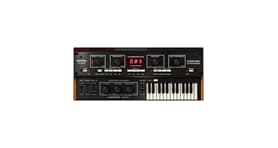


Perform perfect pitch changes controlled manually, via MIDI or with Anti-Feedback.Īnti-Feedback modulates the pitch around unity for a subtle or wild effect. True analog modeling of highly nonlinear electronics for faithful reproduction of the original H910's juicyness and grit. OUT2 Delay Group - adds inspiring attributes to your sound. The built-in envelope follower makes exploring these possibilities easy. With the H910 plug-in you can easily use MIDI to control pitch and harmonization in real-time.Įnvelope Follower - Engineers and producers discovered that sending a control voltage to the hardware H910 could be used to slightly (or massively) vary the pitch, creating entirely new sounds.

Keyboard and MIDI mapping - The original H910 featured a keyboard remote control which was used live by several artists including Elton John. This version recreates the popular technique of running two H910 units in parallel to create lush doubling and other interesting effects. When you purchase the H910 Harmonizer® plug-in, you also receive Eventide’s exclusive H910 Dual Harmonizer®. At extreme settings, you can create unheard-of mechanical sounds and drone effects using self-oscillation, delay, and anti-feedback. Use the H910's pitch changing ability to create specific musical intervals and harmonies, spread guitars, fatten snares, apply subtle organic de-tuning to synths or add slap-back delays to vocals. Simply put, nothing sounds quite like it.Ī powerful creative tool, the H910 plug-in is a faithful recreation of the original hardware. With its unique combinations of pitch shifting, modulation and delay, the H910 can be heard on countless ground-breaking works by artists from AC/DC to David Bowie to Frank Zappa. So, if you are looking to transform, fatten, and mangle your sounds, it is a small investment worth investigating.The H910 Harmonizer® was the world’s first digital effects processor. Its regular price is $249 USD but it is currently on sale for $79 USD.
EVENTIDE H910 HARMONIZER WHAT ARTISTS USED PORTABLE
In addition to being a whole lot more portable and lighter weight, the plugin is also significantly cheaper. It works with Mac, PC, Ableton, Protools, Cubase, etc and its front panel design is true-to-the-original. Featuring: keyboard mapping, MIDI mapping, an envelope follower, delay grouping and anti-feedback pitch changes, the H910’s original pitch “glitching” effect which creates glitches when pitch is modified, as well as self-oscillation (for pads and creating drones), mix lock (to browse presets with wet/dry mix holding steady) and pretty much universal DAW and computer compatibility. Using analog modelling, the Eventide H910 plug-in is faithful as can be to the original. Crank up the settings for robotic space-like effects, dial it down for more subtle slapback delays, reverbs, and pitch manipulations. It is ideal for creating doubling effects, to fatten and enrich sounds. With purchase of the Eventide 910 Harmonizer plugin, you also get access to the D ual Harmonizer option, which emulates two Harmonizers being stacked side-by-side.

Chock-full of hundreds of presets, including those created by renowned artists, the plugin works like a charm, adding thickness and complexity to drums, harmonies to vocals, and de-tuning to synths. Now, more than 40 years later, Eventide has released a Plugin version of the H910. After a few iterations of the H910, Eventide released the H3000, which was lauded by producers like Brian Eno, who wrote a letter to Eventide in 1992 telling them that the H3000 “is the best designed and most enjoyable piece of equipment I’ve ever owned.” The H3000 is different from the original H910 in that it has a simple jog wheel on the front, as well as a plethora of other notable features like stereo shift, dual shift, layered shift, swept shift, reverse combos and swept reverb. But, like most hardware, it was expensive. The Harmonizer revolutionized music making in ways that are undeniable: never before were textural details like this possible. The delay time went up to 112.5 milliseconds, and could be executed by a keyboard remote-control to trigger half-step changes. This multi-effect combination of feedback, delay, and pitch correction simultaneously, could be manipulated to change pitch in half-steps. There was nothing quite like it back in the day when it was first released, in 1974. U nique in the ways that it works with sound, the harmonizer combines delay and feedback with glitch-free pitch correction. Eventide made a name for themselves with the H910 Harmonizer – the first ever digital effects processor.


 0 kommentar(er)
0 kommentar(er)
